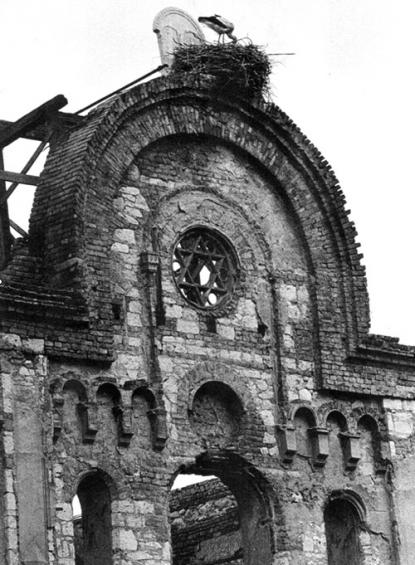2024. April 20. Saturday
*King St. Stephen Museum - Székesfehérvár
|
|
Address: 8000, Székesfehérvár Országzászló tér 3.
Phone number: (22) 398-083, (22) 315-583
E-mail: titkarsag@szikm.hu
Opening hours: Temporarily closed.
|
The exhibition has closed for visitors.
2007.09.09. - 2007.10.28.
Museum tickets, service costs:
|
Ticket for adults
|
900 HUF
|
/ capita
|
|
Ticket for adults
(valid for the temporal exhibition)
|
700 HUF
|
/ capita
|
|
Ticket for adults
(valid for the permanent and temporal exhibitions)
|
1400 HUF
|
/ capita
|
|
Group ticket for adults
(min. 10 people)
|
800 HUF
|
/ capita
|
|
Group ticket for adults
(valid for the temporal exhibition, min. 10 people)
|
600 HUF
|
/ capita
|
|
Group ticket for adults
(valid for the permanent and temporal exhibitions, min. 10 people)
|
1300 HUF
|
/ capita
|
|
Ticket for students
|
450 HUF
|
/ capita
|
|
Ticket for students
(valid for the temporal exhibition)
|
350 HUF
|
/ capita
|
|
Ticket for students
(valid for the permanent and temporal exhibitions)
|
700 HUF
|
/ capita
|
|
Group ticket for students
(min. 10 people)
|
350 HUF
|
/ capita
|
|
Group ticket for students
(valid for the temporal exhibition, min. 10 people)
|
250 HUF
|
/ capita
|
|
Group ticket for students
(valid for the permanent and temporal exhibitions, min. 10 people)
|
600 HUF
|
/ capita
|
|
Ticket for pensioners
(valid for the temporal exhibition)
|
350 HUF
|
/ capita
|
|
Ticket for pensioners
(valid for the permanent and temporal exhibitions)
|
700 HUF
|
/ capita
|
|
Ticket for pensioners
|
450 HUF
|
/ capita
|
|
Group ticket for pensioners
(valid for the temporal exhibition, min. 10 people)
|
250 HUF
|
/ capita
|
|
Group ticket for pensioners
(valid for the permanent and temporal exhibitions, min. 10 people)
|
600 HUF
|
/ capita
|
|
Group ticket for pensioners
(min. 10 people)
|
350 HUF
|
/ capita
|
|
Ticket for families
|
2000 HUF
|
/ family
|
|
Ticket for families
(valid for the temporal exhibition)
|
1500 HUF
|
/ family
|
|
Ticket for families
(valid for the permanent and temporal exhibitions)
|
3000 HUF
|
/ family
|
|
Group guide for adults
(max. 25 people)
|
6100 HUF
|
/ group
|
|
Group guide for adults
(from over 26 people)
|
7200 HUF
|
/ group
|
|
Group guide for students
(max. 25 people)
|
2800 HUF
|
/ group
|
|
Group guide for students
(from over 26 people)
|
3500 HUF
|
/ group
|
|
Group guide for students
(max. 25 people)
|
8300 HUF
|
/ group
|
|
Group guide for students
(from over 26 people)
|
9500 HUF
|
/ group
|
|
Group guide for pensioners
(max. 25 people)
|
2800 HUF
|
/ group
|
|
Group guide for pensioners
(from over 26 people)
|
3500 HUF
|
/ group
|
The book of András Villányi and Tamás Lichtmann published in 2006 is a lyrical confession, ars poetica. The media and the specialized literature report on its photographical and aesthetical values. These pictures motivate us to think about their new aspects and to analyse them again and again. The pictures are beginnings of a dialogue since behind them there are life stories, situations and the unrepeatable moments. At the same time the last thirty years.

The title indicates the intention of documenting as well. Unsaid. The topic, the crucial question of photography (who/what/when) offer the opportunity of "rescuing" and recording for the historian. Recording the objective world - which is the reflex and artistic message of the photographer -, reveals us a world not known for us yet.
Micro and macro history that is personal and universal, concrete and abstract, especially Hungarian Jews and at the same time "eternal" Jews can be seen on the photos.
The photos capture one real moment and also offer a wider context about the last thirty years, the last century and about the Holocaust. They are authentic sources for interpreting the 20th century and understanding the present, they become the part of the historical narrative.

The title indicates the intention of documenting as well. Unsaid. The topic, the crucial question of photography (who/what/when) offer the opportunity of "rescuing" and recording for the historian. Recording the objective world - which is the reflex and artistic message of the photographer -, reveals us a world not known for us yet.
Micro and macro history that is personal and universal, concrete and abstract, especially Hungarian Jews and at the same time "eternal" Jews can be seen on the photos.
The photos capture one real moment and also offer a wider context about the last thirty years, the last century and about the Holocaust. They are authentic sources for interpreting the 20th century and understanding the present, they become the part of the historical narrative.
